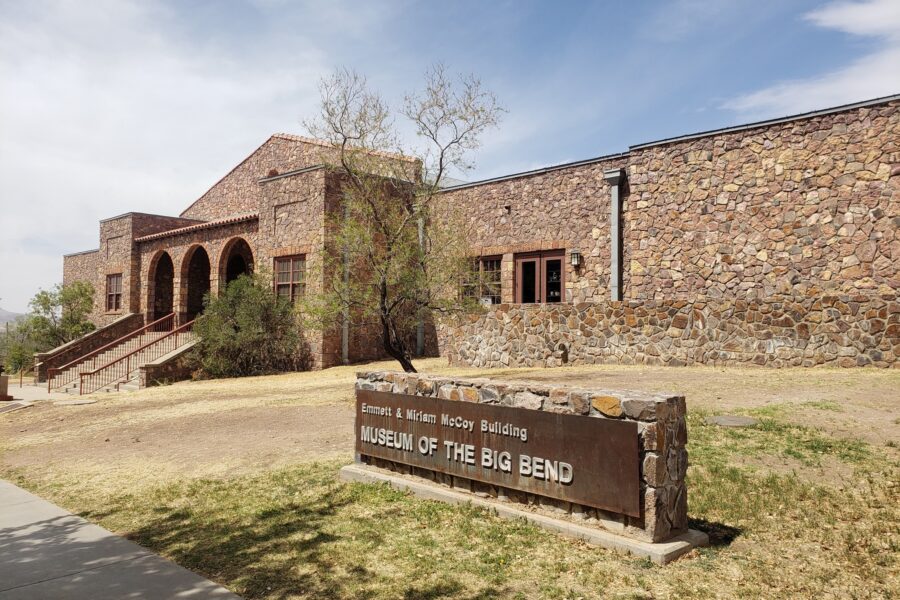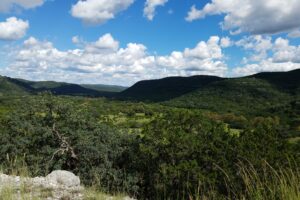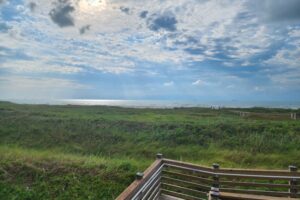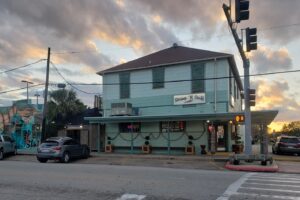Driving through Alpine, we try to find the Museum of the Big Bend without consulting a map. It is on the campus of Sul Ross College—how hard can it be? Well…
With Google Maps open and a picture of the museum façade on my phone, we begin to make progress. Since it is the Saturday before Easter, I am surprised they are open, but Google says they are, the sign pointing the way says they are, and the sign on the door says they are, and it tells us to enter through the gift shop.
“Donde Esta?”
On the way, I stop to examine a bronze statue of a horse. The horse and the story are not what I expected to read. It is sobering and heartbreaking, and thought-provoking.


“Donde Esta?” – “Where is He?”
THE OFFICER HAS HOBBLED HIS HORSE,
DRAWN HIS RIFLE FROM ITS SCABBARD AND
GONE FORWARD TO DO HIS DUTY.
THE HORSE WATCHES HIM GO,
NOT KNOWING THAT HE WILL NEVER RETURN.
THIS HORSE REPRESENTS ALL THE FAMILY, FRIENDS AND COWORKERS WHO HAVE BEEN LEFT BEHIND AS LAW ENFORCEMENT OFFICERS GO OUT TO FACE DANGER AND SOMETIMES NOT RETURN.
THIS MEMORIAL HONORS ALL THE LOCAL, STATE AND FEDERAL OFFICERS FROM THE BIG BEND AREA WHO HAVE PAID THE ULTIMATE PRICE SO THAT THE REST OF US MAY LIVE IN PEACE AND SECURITY.
BIG BEND AREA
LAW ENFORCEMENT OFFICERS ASSOCIATION
2016
The Museum of the Big Bend
Walking through the door of this small, intimate, circular-shaped museum is walking into an ever-changing kaleidoscope of history: geology, flora, fauna, and humanity. Small and informative, the Museum of the Big Bend feeds you information in manageable, digestible chunks. These tidbits of history are either enough to satisfy your pallet or whet your appetite for more—which is a good thing either way.
Circling Through History
The museum is quiet today, and I’m thankful. However, because tomorrow is Easter, I’m not surprised. We pay the small entry fee and listen carefully while the friendly attendant gives us information on the museum’s layout, what we will see, what not to miss, and the fact that it is a text-centric exhibit with numerous audio-visual aids throughout. I’m big on reading storyboards in museums that explain the displays. This visit may take a long time, and the museum closes at 4 pm.
Jim Bones
Before I even begin my exploration of the history of the Big Bend area, I am captivated by a large photograph of a Texas Landscape by photographer Jim Bones. The text overlay begins, “Only a man who loves the land would photograph it with such care….” I read about his life, discover that he is a resident of Alpine, and immediately return to the gift shop to see if one of his photography books is available for purchase. No luck. They are out of print. I think I need to check Amazon.
Geologic History
Back in the central portion of the museum, I begin reading about the history of the Earth and the Big Bend area. There is always something to learn, and I am humbled to be continually reminded of how much I do not know. Reading about the geologic formation on the mountains south of Marathon that we saw yesterday on our way home from Big Bend, I discover that Geologists call them flat irons.

A 400-hundred-million-year-old bed of chert called Caballos Novaculite is draped over East Bourland Mountain. It has eroded into scalloped shapes that geologists call flatirons… Around 200 million years ago this region crumpled and folded when the ancient continent Gondwana, collided from the south with the landmass which would form North America.
I learn a bit more about Santa Elena Canyon and the Chisos Mountains relating to both since I have been to each many times. And then I am reminded that the Earth is old – old as in four-billion years old. That is more than I can comprehend. And the landmass from the south that bumped into what became North America, where I stand, was called Gondwana, a.k.a. now known as South America. I fall into a rabbit hole of curiosity.
My portable, pocket-sized electronic encyclopedia (a.k.a. smartphone—there is a reason for that appellation) shows me a picture of Gondwana, only Gondwana—and something is missing—mainly my origins and my home. What happened to Europe, Asia, and North America? I need a bigger computer.
Archeology, Anthropology, and More
In a short distance, I travel through the world of geology and archeology, with a brief step into anthropology before traversing the almost recent past—recent in the scheme of things, that is. The Old World discovered the New World, and things have never been the same. I am introduced to a Cabeza de Vaca I did not really know before. He is more than a name in a history book but becomes human. I read his words. I feel his fear and worry and wonder.



In 1590, the Spanish carreta became the first wheeled vehicle to enter the United States, and it was the beginning of wheeled transport in the Big Bend area, enabling trade, inspiring trailblazers, and encouraging settlement.
An Invasion
We are halfway through our journey of discovery when like the New World—we are invaded. Our invaders take the guise of students from another college. They are loud, noisy, inconsiderate, and I’m sorry to say, obnoxious. My tolerance level is diminishing fast.
We decide to check out the maps exhibit downstairs in a room too small to while away less than minutes. Back on the first floor, we try again to listen to the formerly abandoned video. No use. The decibel level of the students has increased.
Giving up, we walk toward the entrance, now our exit, and can’t believe what we see. A group of college-age students are gathered around a large diorama of the Big Bend area with buttons on three sides that light up different points of interest. They are involved in a small child’s game, trying to light up all the colored lights on the geography of this area at once. It appears they are driving the museum administrator to the edge of the cliff. Distracting her with our thank you, we leave, looking for new adventures.
Further Information on The Museum of Big Bend
Handicapped accessible and located at the northeast corner of the tobacco-free Sul Ross State University campus, the Museum of the Big Bend is well worth whatever time you can give it.
Admission
- $5.00/person
- Free to children 12 and under
- Free to Members of the Museum of the Big Bend. Click here to join
- Free to SRSU students, faculty, and staff with current ID cards
Hours
- Tuesday – Saturday: 10:00 am – 4:00 pm
Private Tours
Private tours guided by museum staff are available to groups of 8 or more. Tour covers the permanent exhibit, Big Bend Legacy, as well as temporary exhibits. Cost is $10 per person (admission fee is included) and 7-day advance reservations are required. For more information and to schedule your visit, call 432-837-8145.









Leave a Reply
Your email is safe with us.